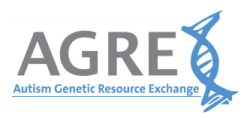 W
WThe Genome Project - Write is a large-scale collaborative research project that focuses on the development of technologies for the synthesis and testing of genomes of many different species of microbes, plants, and animals, including the human genome in a sub-project known as Human Genome Project-Write (HGP-Write). Formally announced on 2 June 2016, the project leverages two decades of work on synthetic biology and artificial gene synthesis.
 W
WThe Human Genome Project (HGP) was an international scientific research project with the goal of determining the base pairs that make up human DNA, and of identifying and mapping all of the genes of the human genome from both a physical and a functional standpoint. It remains the world's largest collaborative biological project. Planning started after the idea was picked up in 1984 by the US government, the project formally launched in 1990, and was declared complete on April 14, 2003.
 W
WThe 1000 Genomes Project, launched in January 2008, was an international research effort to establish by far the most detailed catalogue of human genetic variation. Scientists planned to sequence the genomes of at least one thousand anonymous participants from a number of different ethnic groups within the following three years, using newly developed technologies which were faster and less expensive. In 2010, the project finished its pilot phase, which was described in detail in a publication in the journal Nature. In 2012, the sequencing of 1092 genomes was announced in a Nature publication. In 2015, two papers in Nature reported results and the completion of the project and opportunities for future research. Many rare variations, restricted to closely related groups, were identified, and eight structural-variation classes were analyzed.
 W
WThe Autism Genetic Resource Exchange (AGRE) is a DNA biobank funded by Autism Speaks. It exists to provide DNA specimens to geneticists who are researching autism.
 W
WMcDonnell Genome Institute at Washington University in St. Louis, Missouri, is one of three NIH funded large-scale sequencing centers in the United States. Affiliated with Washington University School of Medicine and the Alvin J. Siteman Cancer Center, the McDonnell Genome Institute is creating, testing and implementing new approaches to the study of genomics with the goal of understanding human health and disease, as well as evolution and the biology of other organisms.
 W
WIn genetics, a genome-wide association study, also known as whole genome association study, is an observational study of a genome-wide set of genetic variants in different individuals to see if any variant is associated with a trait. GWA studies typically focus on associations between single-nucleotide polymorphisms (SNPs) and traits like major human diseases, but can equally be applied to any other genetic variants and any other organisms.
 W
WThe human microbiome is the aggregate of all microbiota that reside on or within human tissues and biofluids along with the corresponding anatomical sites in which they reside, including the skin, mammary glands, placenta, seminal fluid, uterus, ovarian follicles, lung, saliva, oral mucosa, conjunctiva, biliary tract, and gastrointestinal tract. Types of human microbiota include bacteria, archaea, fungi, protists and viruses. Though micro-animals can also live on the human body, they are typically excluded from this definition. In the context of genomics, the term human microbiome is sometimes used to refer to the collective genomes of resident microorganisms; however, the term human metagenome has the same meaning.
 W
WThe Human Microbiome Project (HMP) was a United States National Institutes of Health (NIH) research initiative to improve understanding of the microbial flora involved in human health and disease. Launched in 2007, the first phase (HMP1) focused on identifying and characterizing human microbial flora. The second phase, known as the Integrative Human Microbiome Project (iHMP) launched in 2014 with the aim of generating resources to characterize the microbiome and elucidating the roles of microbes in health and disease states. The program received $170 million in funding by the NIH Common Fund from 2007 to 2016.
 W
WThe Human Variome Project (HVP) is the global initiative to collect and curate all human genetic variation affecting human health. Its mission is to improve health outcomes by facilitating the unification of data on human genetic variation and its impact on human health.
 W
WA DNA segment is identical by state (IBS) in two or more individuals if they have identical nucleotide sequences in this segment. An IBS segment is identical by descent (IBD) in two or more individuals if they have inherited it from a common ancestor without recombination, that is, the segment has the same ancestral origin in these individuals. DNA segments that are IBD are IBS per definition, but segments that are not IBD can still be IBS due to the same mutations in different individuals or recombinations that do not alter the segment.
 W
WChromosome 20 open reading frame 111, or C20orf111, is the hypothetical protein that in humans is encoded by the C20orf111 gene. C20orf111 is also known as Perit1, HSPC207, and dJ1183I21.1. It was originally located using genomic sequencing of chromosome 20. The National Center for Biotechnology Information, or NCBI, shows that it is located at q13.11 on chromosome 20, however the genome browser at the University of California-Santa Cruz (UCSC) website shows that it is at location q13.12, and within a million base pairs of the adenosine deaminase locus. It was also found to have an increase in expression in cells undergoing hydrogen peroxide(H2O2)-induced apoptosis. After analyzing the amino acid content of C20orf111, it was found to be rich in serine residues.